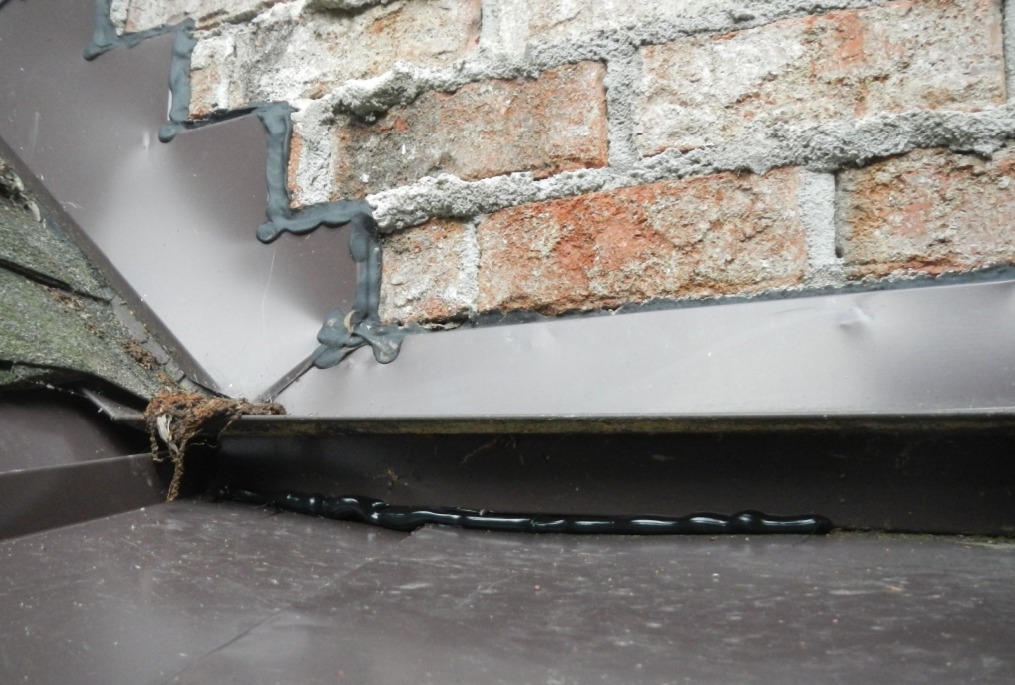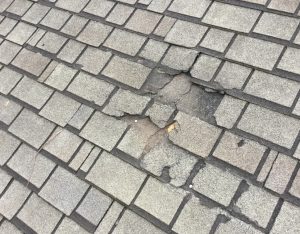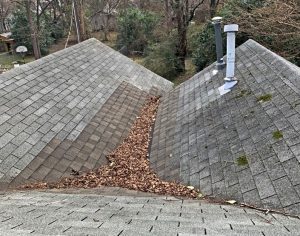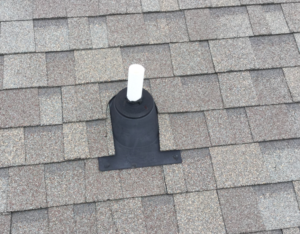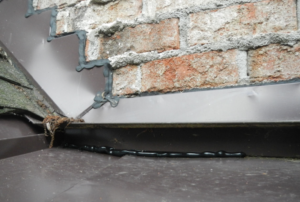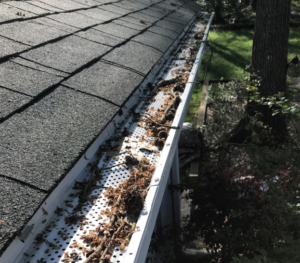Running to get a drip bucket every time it rains is very annoying, but it’s also a sign that your home is experiencing a more significant roofing issue that needs to be assessed as soon as possible. Roof leaks can lead to a sizable investment of both your time and money. To save you from the hassle of finding the source of your roof leak, the experts at Signature Exteriors have compiled a list of the five most common causes of roof leaks. We’ll show you what they look like and why they happen.
Roof Leak from Damaged, Cracked, Missing, or Rotting Shingles
This is an easy item to identify on your roofing system. Shingles are the exterior layer on top of your roof, and you’ll notice if shingles are missing if there are different colored patches or even by finding shingles in your yard. Shingles are very sturdy but can become worn or dislodged by heavy storms, improper installation, or just over time as the shingle ages. Since shingles are the first line of defense against water intrusion, you’ll want to schedule a roof inspection at the first sign of their deterioration to avoid any other areas of your roofing system from unnecessary stress and roof leaks.
Roof Leak from Valleys
The valley of a roof is where two planes of your roof come together. These areas are usually sloped, and it is a very high-risk area for leaking roofs if there are any installation issues. You can often find these by checking for dampness under shingles at the bottom of the valley. The pitch of the roof is important to take into consideration here.
Valleys can fail in several ways based on which installation errors occurred. The most common on older roofs is a lack of Ice & Water Shield in the valleys, an additional layer of protection now standard that significantly improves valley performance. Other failures modes include cracking due to age or condition and mechanical damage, which could come from many sources.
Depending on how the valley has failed, a high-quality repair could vary from replacing a few shingles up to replacing the entire valley. To ensure you receive a repair appropriate for your circumstances, we recommend reaching out to a local roofing professional to assist you.
Penetration Flashing Leaks
Roofing vents are an essential piece of your home’s ventilation system. Roof penetrations like these are typically the weakest part of the roofing system. The flashings around them are prone to deteriorating, cracking, and breaking and must be regularly inspected to prevent roof leaks. As seen above, these flashing typically consist of a hard plastic or metal base with a rubber gasket around the penetration itself.
This type of leak often leaves water stains, dark spots, and wet areas on the underside of your roof sheathing. If you’re experiencing a leak that seems to be from one of your roof vents, call an expert to perform an inspection.
Wall Flashing Roof Leaks
Wall flashings, including step, counter, and apron flashings, are thin pieces of metal installed at roof-to-wall transitions to create a leak-resistant barrier.
Improper initial installation, severe storms, and the age of the sealant at the flashing often contribute to failures of wall flashings. If you’re experiencing a roof leak and you think the flashing on your home is the source, you can attempt to caulk it yourself or call a local roofing expert to assist.
Leaks from Clogged Gutters
Clogged gutters cause a lot of roofing concerns. The entire purpose of your gutter system is to help direct water away from your home. When this system becomes clogged with leaves and other debris, it stops the flow of water, leading to overflow and pooling, an ideal time for water to find its way inside your home.
We recommend installing gutter guards to help avoid larger debris from clogging your gutters (as pictured above). However, you still want to make sure you’re regularly brushing out your gutter system so it can direct water away from your roof edges, siding, and foundation.

